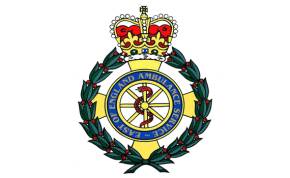
In my message about the development of a Trust strategy in October, I indicated that our next strategic plan would need to expand on our models of care, specifically:
If we want to be able to offer patients different and perhaps more appropriate alternatives, what are they and who will provide them?
Throughout this year, we have increased our effort in developing relationships with the clinical commissioning groups (the NHS bodies in charge of purchasing the provision of primary care and other out of hospital services). Given that up to 60% of our patients could benefit from alternatives away from the emergency department, it is imperative that we develop strong and lasting relationships with these services so that the associated care pathways can be developed together - in the best interests of the patient, the ambulance service and the acute hospitals.
We already do some of this work, however, the challenge is to develop packages that are attractive to our commissioners and which move the ‘Emergency and Urgent Care agenda’ forward, helping to treat the patient closer to home.
From an EEAST perspective, this creates the exciting possibility of getting back to a place when we have strong clinical input at the point of 999 demand, triage and assessment capacity; supported by GP ‘top cover’ to deliver safe and effective clinical triage; roll out ‘extended care paramedic’ practice; and focus on strengthening clinical decision making and confidence around non-conveyance and referral decisions.
Needless to say, having access to ‘phone a friend’ in the EOC environment will be an important piece of the patient safety net. In the longer term, rolling out a new personal issue ePCR solution that gives clinicians access to a regional directory of services, patient notes and decision support information will be important tools to support patient safety and the quality of care we can give. If you have no connectivity, you can call EOC and speak to someone who can get access to the information you need.
We also need to think about the potential benefits of a Community Paramedicine Program (CPP), where the CPP would have the capacity to expand into a range of different models of care. Of fundamental difference to the traditional role of an ambulance service, the CPP will be predominantly a service of ‘prevention’ rather than one of ‘reaction’.
The effectiveness of such models of care would need to be measured through increased emergency department avoidance, patient safety and satisfaction indicators, reduced re-admission and re-contact (post 999 call) rates. Addressing patient safety considerations in advance and in concert with other key stakeholders, is going to be a critical requirement for success.
With best wishes,
Robert
Published 5th November, 2015